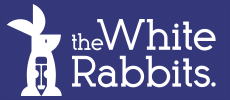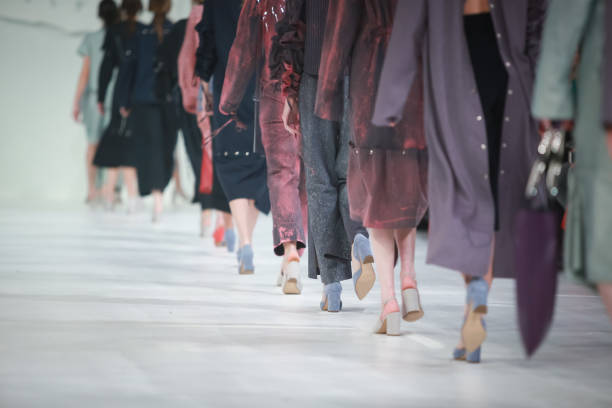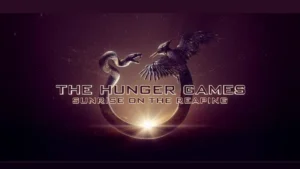If you’re even a little bit online, it seems like just about everything is deemed a recession indicator these days. From an increase in employees bringing their lunch to work to the resurgence of vampire media, things are starting to look bleak.
Most of the recent online discourse centers around the latest style trends as possible recession indicators. Fashion is mirroring our collective fate as the next “noun-core aesthetic” takes over our social media feeds: recession-core. An increase in neutral tones, longer hemlines, and the return of business casual at the club points to frugality. Suddenly, there’s a need for wardrobes to stretch from day looks to night without breaking the bank.
The rise of neutral tones and quiet luxury
Every year, Pantone announces a Color of the Year in accordance with the current “global mood.” This year, that color is mocha mousse, a warming hue “answering our desire for comfort.” With the daily onslaught of bad and worse news, a need for coziness is bang on. But the surge in neutral tones has been a part of the zeitgeist for a while now. Leading up to recession-core, there was the sad beige aesthetic, the eternal clean girl, and of course, quiet luxury.
The quiet luxury aesthetic rose in tandem with the popularity of HBO’s mega hit, Succession, a show about the excessively wealthy Roy family whose patriarch runs a media empire. The costume design is deliberate – various shades of blacks, browns, and beiges dominate a wardrobe made with durable materials like cotton, leather, and cashmere. The Roys, and those in their orbit, look sleek and effortless in their clothes. There’s not a flashy designer label in sight.
Quiet luxury garments can also be an investment. The higher price tag, natural materials, and better build quality make for a wardrobe that will last and continue to look good through wear and wash.
Business casual at the club = recession-core
Quiet luxury and office siren trends have folks donning blazers, peplums, and waistcoats like it’s 2008 and the crew’s heading to the club. The internet is rife with late 2000’s throwbacks of grinning 20-somethings partying in LinkedIn-looks as the world’s economy burns around them.
During the 2025 fall/winter fashion week, Stella McCartney’s collection From Laptops to Lapdance solidified the return of office casual at the club. The line consists of a mostly grey, black, and white palette with only a few pops of color – red, butter yellow, muted teal and pink. While McCartney’s line exaggerates blazer shoulders for power and sports scrunched, sensual waistlines, these looks and the dupes they’ll inspire don’t exactly scream: “look at me!” Instead, the garments blend into the ebb and flow of the daily commute.
Further, fast-fashion label, Pretty Little Thing, has also jumped on the business casual train with their recent rebrand. Gone are the clingy, revealing, and colorful party dresses and vacation-wear once offered. The brand now displays various office-wear in desaturated browns, yellows, and beiges.
If a recession is indeed on its way, it makes sense people will want to curb their spending. Recession-core is trend-proof as it goes against the breakneck speed of microtrends and the endless purchases that come with trying to keep up with them. It’s a way of practicing minimalism and frugality in uncertain times. The aesthetic is about versatility, having a wardrobe that prioritizes work, but can be worn at happy hour and beyond.
Lipstick and hemlines…canaries in the coal mine?
Of course, no recession indicator discourse would be complete without mentioning rising lipstick sales and the trend of longer hemlines. The chairman of Estée Lauder, the late Leonard Lauder, came up with the lipstick index, an economic theory that came about during the early 2000’s recession. It posits that when faced with the threat of a recession, consumers treat themselves to small luxuries, such as lipstick, instead of splurging on big ticket items like dresses or handbags.
The origins of the hemline index was more an observation than an economic predictor. Economist George Taylor wrote about the explosive growth in the hosiery industry in relation to shorter skirts in the 1920s. The notion goes that in good times, when people have money to spend, hemlines go up. And when the economy takes a turn for the worst, it’s time to cover up those gams. After all, the popularity of maxi skirts has increased significantly as the stock market started to tumble the closer we got to the so-called Liberation Day of April 2nd, 2025. Google Trends shows maxi skirts continue to be in demand since.
It goes without saying that these economic theories should be considered with a large grain of salt. Lipstick sales did go up during the Great Depression and the short recession of the early 2000s following the dot-com bubble burst. But lipstick sales actually fell during the Great Recession of 2007-2009. During the pandemic, consumers increasingly purchased moisturizer, hair products, and nail care following the crash in March 2020.
As for the hemline index, it’s accrued some controversy over the years. Longer hemlines don’t always mean shoppers are strapped for cash. During the post-war eras, longer skirts were a sign of prosperity. Without the need to ration and cut costs, longer skirts were an economic indulgence since they required more fabric. Further, trend cycles have gotten a lot faster since the Great Recession. Styles come, go, and come back quickly and hemlines, whether short, mid, or long, are sometimes simply along for the ride.
Some thoughts
In the endless swirl of recession discourse, it’s hard to trust what is an indicator and what isn’t. I’m wondering if a lot of these trends are just a new generation of folks coming of age and wanting to participate in the fashion of their millennial foremothers and fathers.
Past indicators of economic downturn that rang true then aren’t necessarily going to hold up now. That comforting purchase of a lipstick in 2001 is going to hit the wallet harder today thanks to inflation. Meanwhile, the comeback of the peplum top is also being heralded as a recession indicator. However, in the past, peplums tended to trend after moments of crisis. Dior’s New Look peplum jacket, for example, debuted in 1947, two years after the end of WWII. That this garment is finding its way back onto the fashion scene now is, in my view, a typical example of the trend cycle doing its thing.
Art has a way of imitating life and the construction and design of garments is, of course, an art in and of itself. I think the real recession indicators in fashion are the surge in neutrals and the rising interest in simple, conservative looks. Minimalist fashion is flexible; multiple wears quickly justifies the purchase. In a time where consumers are increasingly putting day-to-day expenses – such as groceries – on after-pay, keeping up with the latest trending aesthetic is likely the last thing on anyone’s mind.
Check out:







Be First to Comment